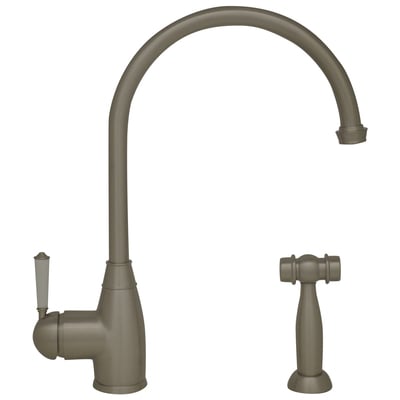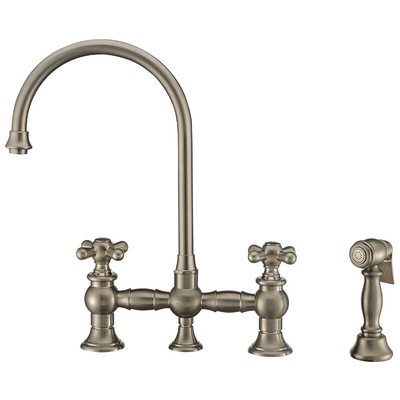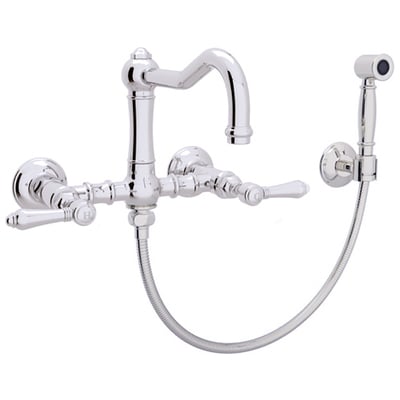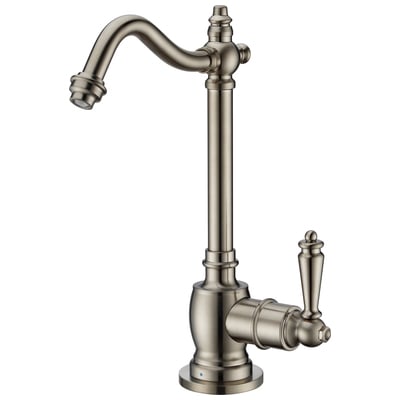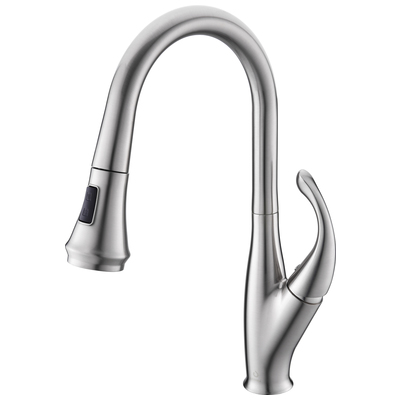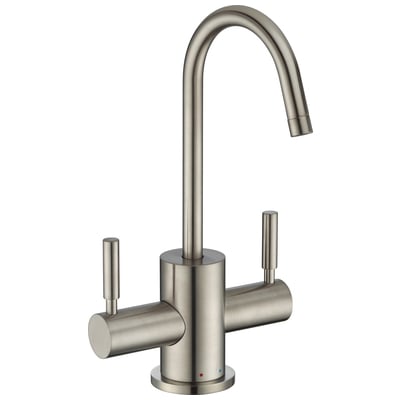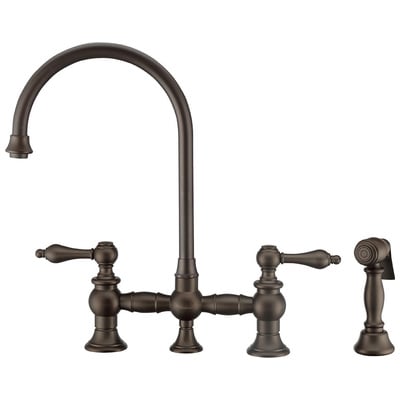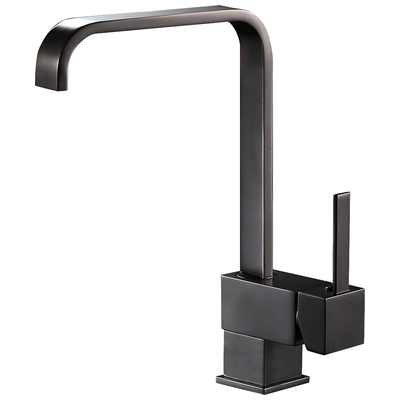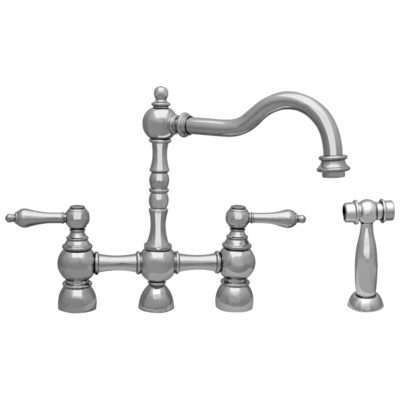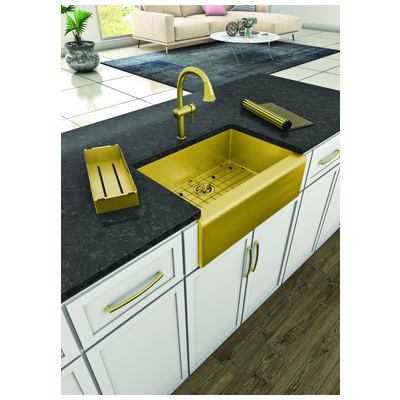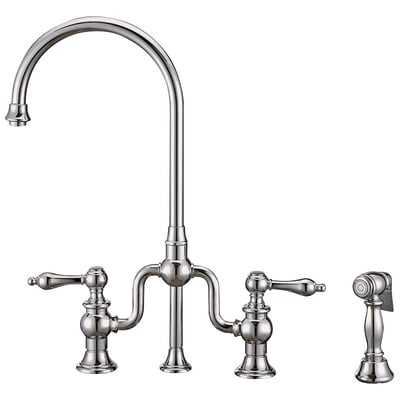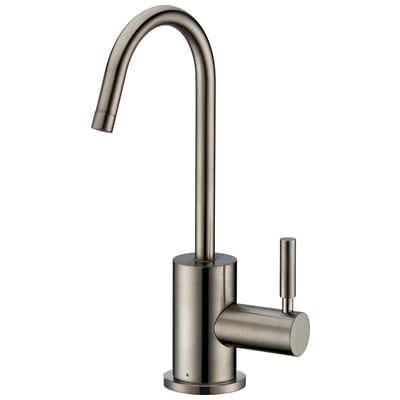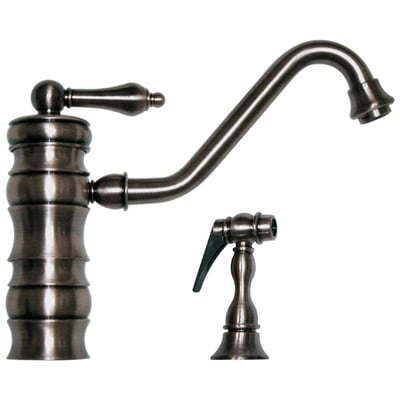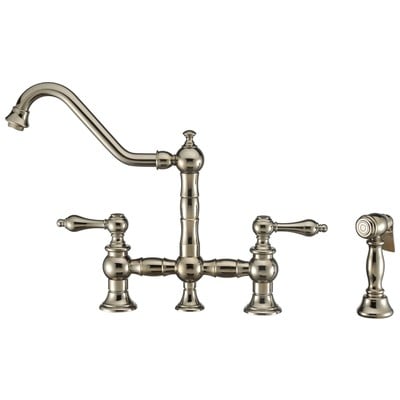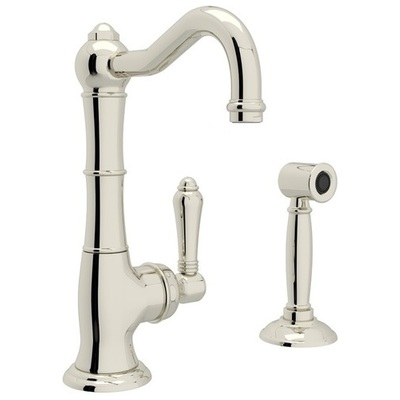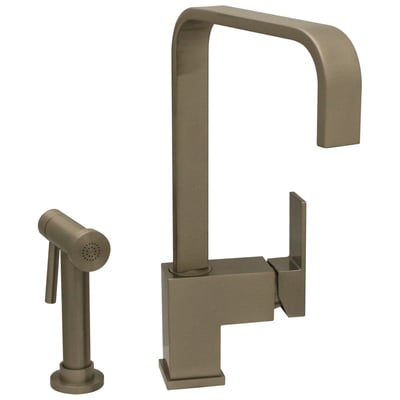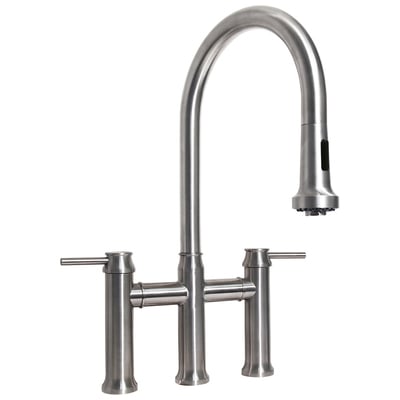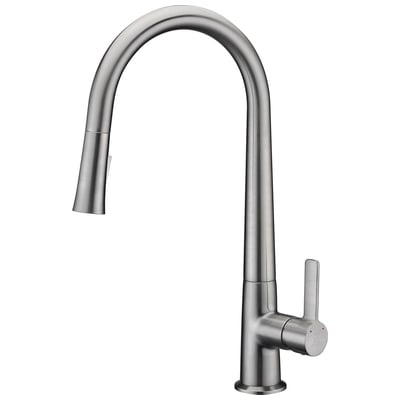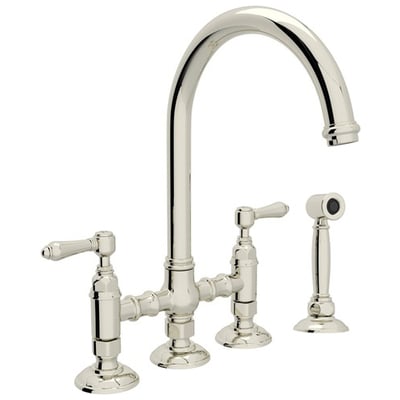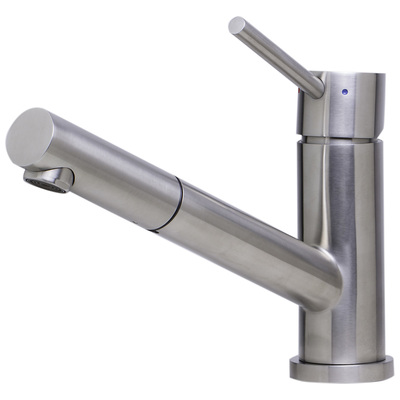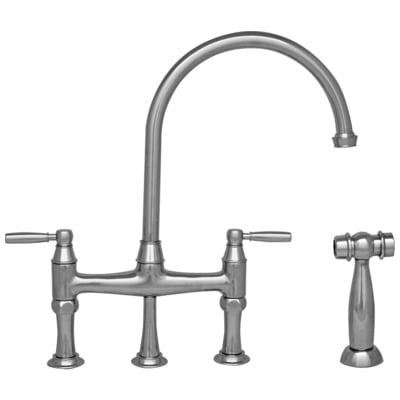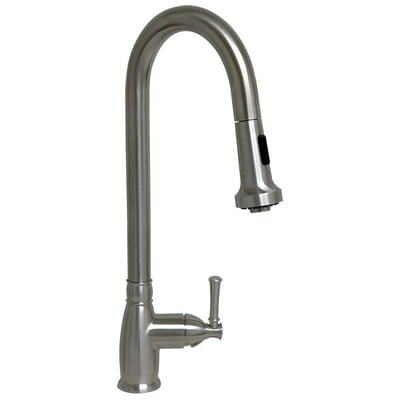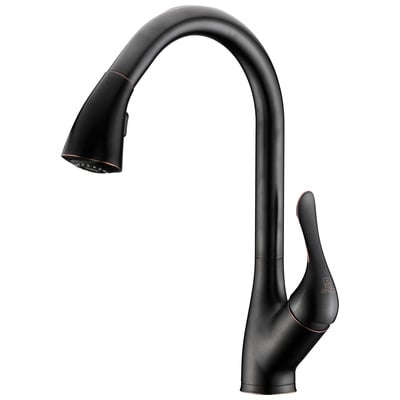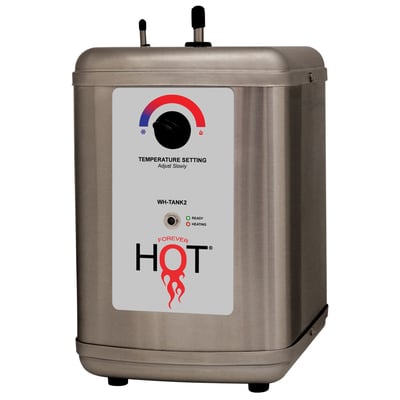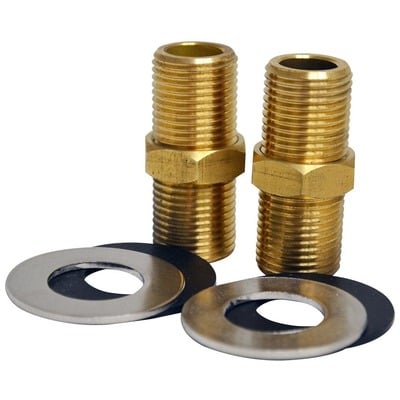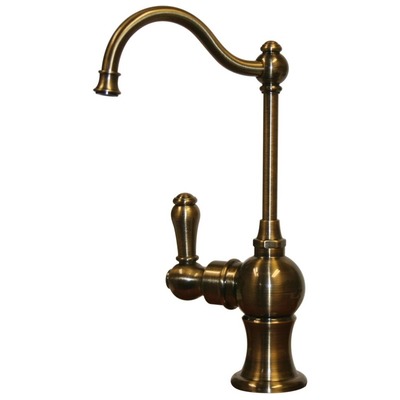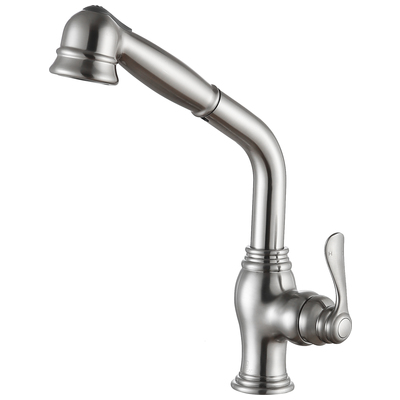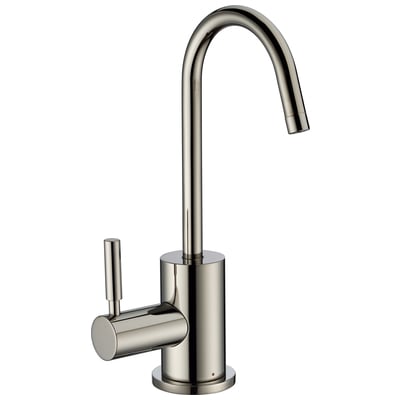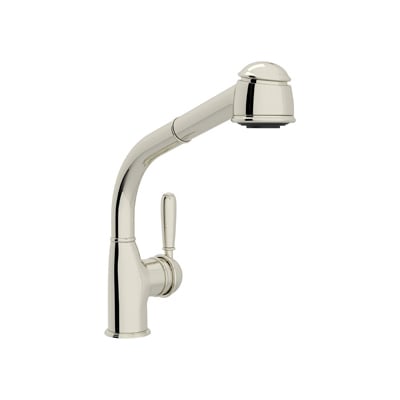Replacing your kitchen faucet is a big decision. It’s a fixture you’ll use daily, which means it has to both look good and work well. But getting both will often cost a premium. And unfortunately, most of the conversation about choosing a new model revolves around the looking good part: the material used and its finish. But you hear less about the working-well half, specifically the part you’ll interact with the most: the handles. Thinking about faucet handles may feel like a tedious part of the buying process. But picking a faucet that fits how you use your sink will save you a major headache later on.
One or Two Handles?
Chances are, you’re looking for a definitive answer about the “correct” number of handles for a kitchen sink. Unfortunately, the short answer is that there isn’t one; there are differences between each, but it’s up to you to decide what’s best for your kitchen. A two-handle faucet will give you more precision and control. Aka, you can adjust the volume of hot and cold water independently. That means more accurate temperature control even with your faucet on just a trickle. You can also get your hot water a little hotter and your cold water a little colder. That said, you’ll need to use both hands to turn your water on and off; it can take a little more fiddling to adjust the volume without losing your ideal temperature. Single handle faucets will be a tad less precise, but can be easily adjusted one-handed.
Do You Have Enough Holes?

A big determining factor in how many faucet handles you’re able to have is the number of holes drilled into your sink base to access the plumbing. The more you have, the more options you have without replacing the entire basin and/or part of your counter. Three to four holes are generally standard on pre-drilled sinks, but your setup may have more or fewer. The “default” traditional installation (and the one considered most visually appealing) is a “widespread” setup. That means holes for two faucet handles and the spout, with a separate spray handle occupying the fourth hole.
Less Holes Can Be More

A bridge faucet uses two holes, one for each handle, but doesn’t need one for the faucet. Instead, the handles connect in the middle above the sink, combining at the base of the spout to deliver water. Then there is the single hole setup, in which you either have a single handle faucet or a two handle one with the handles attached to the head rather than the sink. Have more holes than you need for your ideal faucet but don’t want to cover them with a metal plate? You can use them for sink accessories like a sprayer head or built-in soap dispenser.
Where Should The One Handle Be?

If you decide to stick with a one handle faucet, where that handle is located is incredibly important. It’s where you’ll reach every time you need to turn the faucet on and off. Most people are right-handed, so in theory you want the handle on the right side, in reach of your dominant hand. But in practice, you have to remember that you’re likely already holding something when you go to turn on your sink. Chances are, you’re holding that spatula or whisk or pot in your right hand and may actually operate the faucet with your left. So before you start shopping, spend a few days paying attention to which hand you use to reach for your existing faucet to access your existing faucets before buying a replacement that has a side handle. It’ll save you a lot of trouble later on.
More Single Handle Options
A side handle isn’t your only choice, and may not be worth it in a house with both lefties and righties. Having a handle on top of your faucet is a good compromise. It’ll also keep the handle out of the way of any faucet accessories, and is a little more intuitive to use than a faucet with a side handle. They also more clearly keep the traditional “left for hot and right for cold” setup. So why aren’t these a clear winner? Because unfortunately many models are basic and builder-grade – a look you’d more readily associate with an apartment than a luxury kitchen. That said, be wary of manufacturers that try to mix up the look, with unusually shaped handles or other gimmicky elements. They might look cool, but are almost always less ergonomic to use – which sacrifices the main appeal of these faucets!
What About Knobs?

Most contemporary faucets feature sleek handles, but you can choose a more old-fashioned knob or cross-handle for the aesthetic. Equally as functional, these are a simple and effective way to bring a more traditional touch to your kitchen. However, knobs have two main drawbacks. First, they can be difficult or uncomfortable to grip. While you shouldn’t have to wrench a vintage-style faucet on and off the way you would an actually-old one, if you have concerns about grip strength, knobs and cross-handles require a little more grip strength and dexterity to operate comfortably. Second, they’re more prone to hot-cold confusion, depending on how they’re installed. With enough time, you’ll get used to any setup you use regularly. But it’s worth checking before your plumber leaves if you want to guarantee a direct replacement for your existing faucet!
It’s easy to get caught up in appearances when you’re shopping for a new kitchen faucet. But how it handles is also an important factor you should consider before making a purchase!
Shop All Kitchen Faucets:




